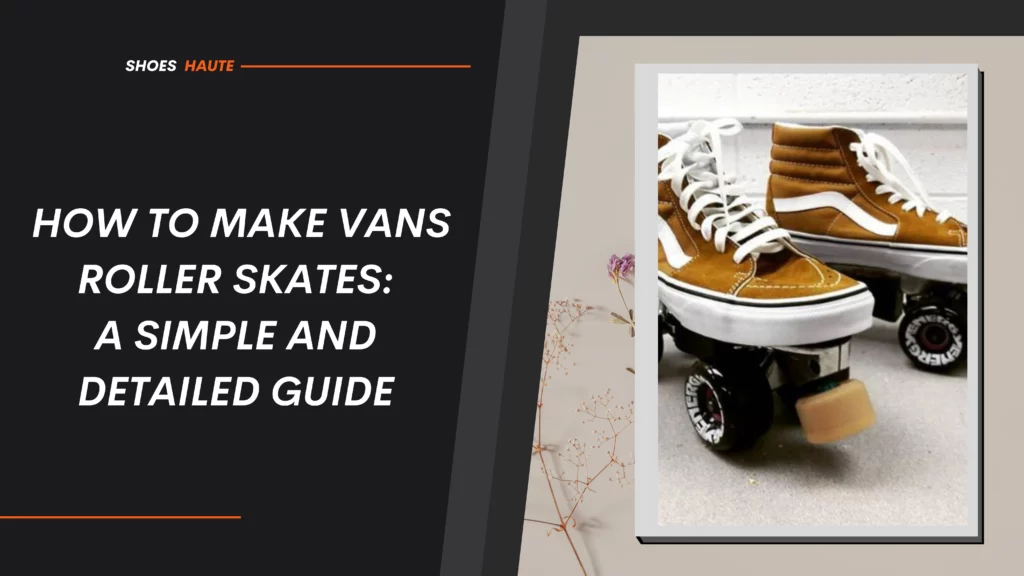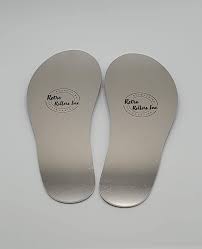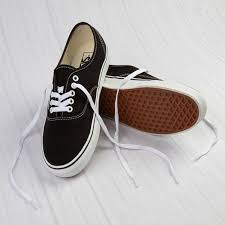
Roller skating has been a beloved pastime for many people for years. It’s a fantastic way to stay active, improve balance and coordination, and enjoy the outdoors. However, store-bought roller skates can be expensive and limited in terms of personalization options.
For those who love Vans shoes, you may be curious about how to make your own Vans roller skates to take your roller skating experience to the next level. Not only can you create a stylish pair, but it can also be a more budget-friendly option.
In this article, we will walk you through the step-by-step process of making your own Vans roller skates using simple materials and techniques. From selecting the right Vans shoes to installing the wheels and bearings, we will cover everything you need to know. We will also provide some helpful tips for maintaining the safety and functionality of your Vans roller skates.
Whether you’re just starting out or a seasoned skater, this guide will assist you in creating a one-of-a-kind pair of Vans roller skates that will make you stand out from the rest.
What makes Vans shoes a preferred choice over other shoes?
It’s important to understand why Vans shoes are a preferred choice over other shoes before starting the process of making your own Vans roller skates. Vans roller skates have become increasingly popular in recent years, especially among skaters looking for a personalized touch to their equipment.
One of the advantages of using Vans shoes as a base for your roller skates is their durability and comfort. These shoes are designed to withstand daily wear and tear, making them a great option for skating. With the right materials and tools, you can create a pair of roller skates that are both stylish and practical.
Additionally, the wide variety of styles and colors available from Vans allows for endless possibilities in creating a unique look that matches your personal style.
Essential materials for creating your own Vans roller skates.
To create your own Vans roller skates, you will need the following materials.
Aluminium Insole

An aluminum insole is a customized insole that provides extra support and stability to your Vans sneakers. It is created by cutting an aluminum sheet to fit the bottom of your shoes and drilling holes for mounting hardware.
Aluminium Sheet:
This material is optional, and you may only need it if you are making the insole yourself. However, using it can greatly enhance the performance and comfort of your roller skates. It is recommended to use an aluminum sheet that is at least 1.5mm thick, but preferably 2mm if available.
Sharpie or Paint Pen:
When creating your aluminum insole, use a sharpie or paint pen to trace the outline of your Vans shoes onto the aluminum sheet. This will ensure that the insole fits precisely within your shoes and provides the necessary support and stability for your roller skates.
A Pair Of Vans Shoes:

Your roller skates will be built upon a pair of Vans shoes, so it is important that they fit comfortably and properly. You can choose any style of Vans shoes, but it is recommended to avoid shoes with thick soles as they can make mounting the roller skate plates more challenging.
Roller Skate Plates:

The metal frame that holds the wheels and attaches to your Vans shoes is called a roller skate plate. There are several types and brands (Sure-Grip, Riedell, and PowerDyne) of roller skate plates available, so it is important to select one that fits your needs and budget. It is also essential to ensure that the plates are suitable for the size of your wheels and bearings. The choice of plates may also depend on personal preference, skating style, and affordability. For instance, some plates are designed for speed skating, while others are better for artistic skating.
Mounting Hardware:

This hardware is used to attach the roller skate plates to your Vans shoes, and it typically includes bolts, nuts, and washers. It is crucial to purchase hardware that fits your plates and shoes properly to ensure a secure and safe attachment.
Roller Skate Wheels:

Roller skate wheels are available in various sizes, shapes, and durometers (hardness levels) and can be made of different materials such as plastic, rubber, and urethane. It is important to select wheels that are suitable for the type of skating you plan to do and that match the size of your plates and bearings.
The size, shape, and durometer (hardness level) of the wheels can impact the performance of your skates. For instance, larger wheels are typically used for outdoor skating, while smaller wheels are better for indoor skating. Harder wheels offer more speed but less grip, while softer wheels have better grip but are slower. It is important to choose the right combination of wheel factors for your skating needs.
Bearings

Bearings are small metal balls that allow wheels to spin smoothly. They come in various grades and ABEC ratings, with higher values indicating greater precision and smoother spinning. However, it should be noted that the ABEC grading system is not standardized, and different manufacturers may use different standards. It is crucial to choose bearings that are compatible with your wheels and plates.
Toe Stops (Optional):

Toe stops are rubber pieces that attach to the front of your skates and are used for slowing down or stopping. While they are optional, they can be helpful for beginners or those who want more control when skating. Toe stops come in various styles, including adjustable and non-adjustable options.
Necessary tools for making your own Vans roller skates.
You need the following tools for making your own vans roller skates.
Drill Bits:

To create holes in your Vans shoes and the aluminum insole, you will need a drill. Normal drill bits should suffice for this task.
Jigsaw, Gloves, Mask:
Jigsaw, gloves, mask, tool lube, sanding block, or sponge are only necessary if you are making aluminum insoles. If you are purchasing insoles from a store, these materials will not be needed.
If you are creating an aluminum insole from scratch, you will need a jigsaw to cut out the insole shape from the aluminum sheet. It is recommended to wear gloves and a mask to protect your hands and lungs from metal shavings. Using tool lubricant can also help reduce friction and extend the life of your jigsaw blade. Lastly, use a sanding block or sponge to smooth out any rough edges on the aluminum insole.
Screwdriver:
You will need a screwdriver to attach the mounting hardware to your Vans shoes. Make sure to use a screwdriver with the same head as the mounting hardware to avoid damage.
Wrench:
You will need a wrench to securely tighten the mounting nuts onto the roller skate plates. Be sure to use a wrench that is the same size as the mounting nuts to prevent stripping or damage.
1 nail:
A nail can be used to create a pilot hole before drilling the final hole in the Vans shoes. This can help prevent the material from tearing or cracking during the drilling process.
Hammer or another strong-hitting object:
Use a hammer or a similar heavy tool to lightly tap the mounting hardware into place on the Vans shoes. This will help secure the hardware in place.
By gathering all of these materials, you will have the opportunity to create a personalized and one-of-a-kind pair of Vans roller skates that perfectly match your style and needs.
Detailed steps for creating your own Vans roller skates.
These are the steps you can follow to create your own Vans roller skates using the materials and tools mentioned:
Prepare your Vans shoes:
Before starting the customization process, make sure to remove the laces and insoles from your Vans shoes and thoroughly clean them. Allow them to dry completely before proceeding.
Make the aluminium insole (optional):
If you are making an aluminum insole, use a sharpie or paint pen to trace the outline of your Vans shoes onto the aluminum sheet and carefully cut out the insole shape with a jigsaw. Then, use a sanding block or sponge to smooth out any rough edges.
Mark the placement of the plates:
Use masking tape to mark the positioning of the roller skate plates on the bottom of your Vans shoes. This will help ensure that the plates are correctly aligned when you attach them.
Create pilot holes:
Create small pilot holes in the marked areas for the plate placement on your Vans shoes using a nail and hammer. This will guide the direction of the drill bit and prevent the shoe material from tearing or splitting.
Drill holes in the shoes:
Use a drill with a 1/8 inch drill bit to make holes in the Vans shoes where the pilot holes were created. Ensure that you drill through the sole of the shoe.
Attach the mounting hardware:
Place the roller skate plates on the bottom of the Vans shoes by inserting the mounting bolts through the holes in the plates and shoes. Use a wrench to securely tighten the nuts onto the bolts.
Insert the aluminium insole:
If you created an aluminum insole, slide it inside the Vans shoes and place it on top of the sole. Align the mounting holes in the insole with the holes in the Vans shoes and attach the mounting hardware.
Add the wheels and bearings:
Put the bearings inside the wheels and insert them onto the axles of the roller skate plates. Ensure that the wheels spin freely and smoothly.
Toe Stops:
If you have toe stops, insert them into the front of the roller skate plates and secure them using the mounting hardware.
Test the skates:
Now that your custom Vans roller skates are complete, put them on and try them out on a smooth surface. Adjust the mounting hardware and toe stops as necessary for your comfort and optimal performance.
Congratulations on creating your own
Additional advice and recommendations.
- The first step is to choose the right size and style of Vans shoes. Make sure to select shoes that fit well and are comfortable, as roller skating can put a lot of strain on your feet. It is recommended to try on multiple sizes and styles to find the perfect fit for your feet. Additionally, breaking in your shoes before skating can help provide optimal comfort and flexibility.
- When buying roller skate plates, it is crucial to ensure that they are compatible with your Vans shoes and the type of skating you plan to do. Some plates are designed for specific styles of skating, such as roller derby or jam skating, while others are more versatile. Take the time to research different brands and models to find the best option for your needs.
- When installing roller skate plates on your Vans shoes, it can be challenging, especially for beginners. It is crucial to carefully adhere to the instructions provided by the manufacturer and use the appropriate tools. If you are unsure about the process, it is best to seek guidance from a professional or someone with experience in roller skating.
- When purchasing roller skate wheels, it is essential to consider the type of skating you will be doing. Harder wheels are better suited for outdoor skating, while softer wheels are more suitable for indoor use. It is also important to ensure that the wheels are compatible with your plates and bearings. Investing in higher-quality wheels can also improve performance and durability.
- When designing Vans roller skates, it is important to carefully consider the type of bearings to use. Make sure to select bearings that are compatible with your wheels and plates, and consider investing in higher-quality bearings for a smoother and more precise spinning experience.
- To avoid any damage or issues, it is important to take your time and use the correct tools when drilling holes in your Vans shoes and aluminium insole. Before drilling the final hole, start with a pilot hole using a 1/8-inch drill bit and a nail. This will help to prevent any tearing or cracking of the shoe material. Also, make sure to use a screwdriver and wrench with the same head and size as the mounting hardware to avoid any stripping or damage.
- In conclusion, creating Vans roller skates can be a rewarding and enjoyable process that leads to a well-crafted and comfortable pair of skates. By following these tips and considerations, you can create a custom pair of roller skates that best fit your skating style and needs.
Safety precautions to take to ensure your skates are ready for use.
Put on your safety equipment:
When testing your skates, it is important to have all the necessary safety gear, such as a helmet, knee pads, elbow pads, and wrist guards. These items will provide protection from potential injuries while testing your skates.
Check the mounting hardware:
Prior to putting on your skates, ensure that all the mounting hardware is securely tightened. Use your tool to tighten the nuts as much as possible without causing any damage.
Test the wheels:
Once you have put on your skates, stand and roll back and forth to check for smooth and stable wheel rotation. If you encounter any problems, make sure the bearings are properly seated and tighten them if needed.
Test the toe stops (if applicable)
If your skates have toe stops, try them out by rolling forward and pressing down on them. Make sure they stop the skates smoothly and are firmly in place without any wobbling.
Test the stability and balance:
After getting comfortable with rolling back and forth, practice standing still on your skates and shifting your weight from side to side. This will help you gauge the stability and balance of your skates.
Practice skating:
Take your time and practice skating at a slower pace, focusing on getting comfortable with the movement and balance of your skates.
Test your stopping ability:
As you continue to practice skating, it is important to test your stopping abilities by using your toe stops (if available) or performing a T-stop. This will help you become more proficient at stopping quickly and safely.
Test your turning ability:
Once you have mastered skating in a straight line, begin practicing turns by leaning into them and shifting your weight from side to side. This will help you become more comfortable and proficient at turning quickly and safely.
Adjust as needed:
If you experience any issues or discomfort while testing your skates, make any necessary adjustments. You can try tightening the mounting hardware, changing the toe stops, or experimenting with different wheels or bearings.
Repeat the test:
After making any necessary adjustments, be sure to repeat the testing process to ensure your skates are safe and ready for use. It is important to regularly test your skates to ensure they are in good working condition and safe to use.
By carefully following these steps and conducting a thorough test of your skates, you can guarantee that your Vans roller skates are safe, comfortable, and ready for hours of enjoyment on the rink or the streets.
Conclusion:
Now that you have a better understanding of how to make Vans roller skates, you can enjoy the process and create a successful pair of skates. By using the right materials, tools, and instructions, you can customize your skates to your preferences and skating style. Take your time to carefully measure and plan the placement of the roller skate plates for a secure and safe attachment. Additionally, it is crucial to thoroughly test and make any necessary adjustments to ensure the skates are both comfortable and functional before use. As a safety precaution, always wear the appropriate gear when working with tools and equipment and seek professional guidance if needed. Most importantly, have fun and enjoy your skating experience!
Frequently Asked Questions
Is it possible to create roller skates using any type of shoe?
No, not all types of shoes can be used to make roller skates. It is crucial to select shoes that are both comfortable and have sturdy, flat soles. While Vans shoes are a popular option, other brands may also work as long as they meet these requirements.
Is it necessary to create an aluminium insole for my roller skates?
While an aluminium insole is not required, it can significantly enhance the performance and comfort of your roller skates. Alternatively, you can use the standard insole that comes with your shoes or purchase an aftermarket insole.
What is the recommended wheel size for my roller skates?
The size of your skate wheels depends on the type of skating you plan to do. Smaller wheels (58-62mm) are typically used for indoor skating or dancing, while larger wheels (62-70mm) are better for outdoor skating or cruising.
What factors should I consider when choosing roller skate plates?
When deciding on roller skate plates, it’s important to consider your skating style and skill level. Different plates are designed for beginners, intermediate, and advanced skaters. Also, make sure the plates are suitable for the size of your wheels and bearings.





